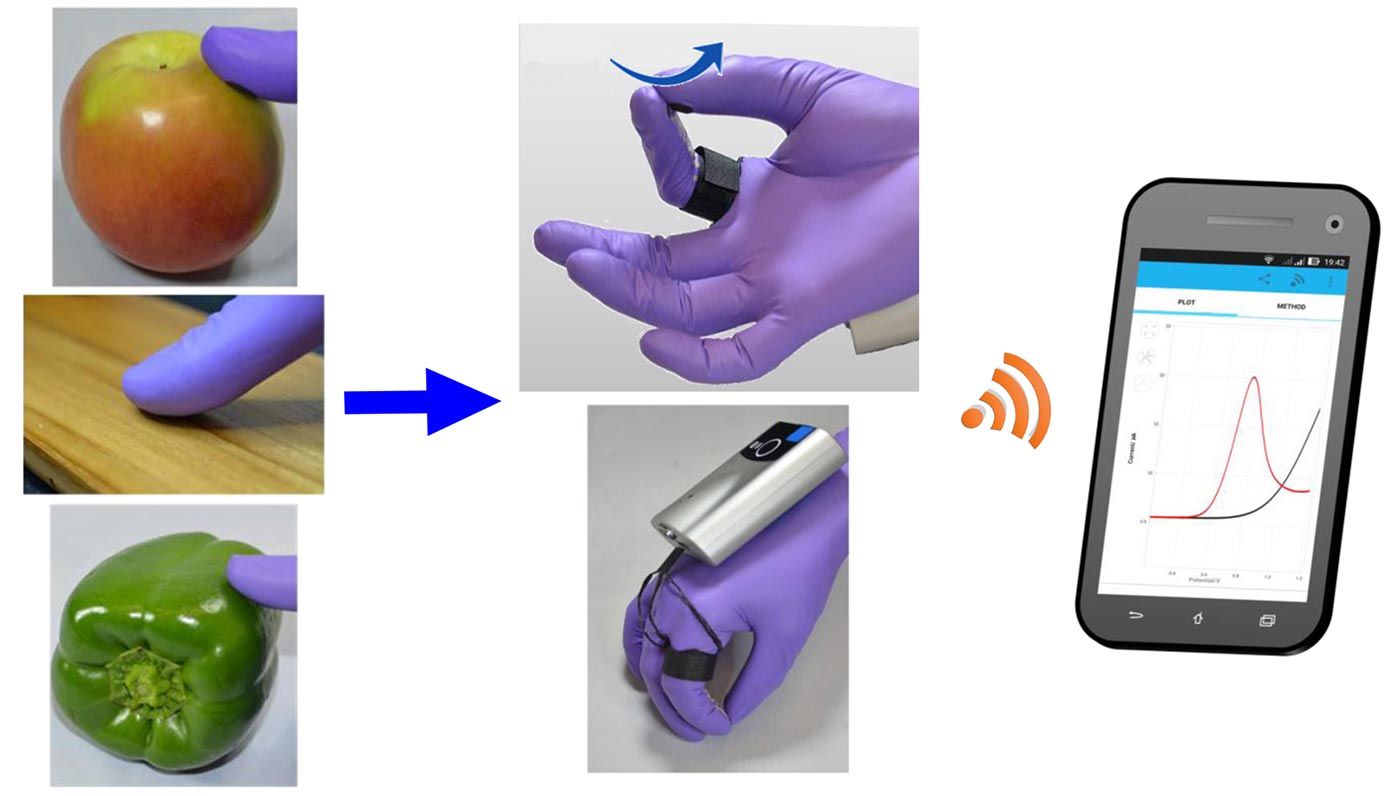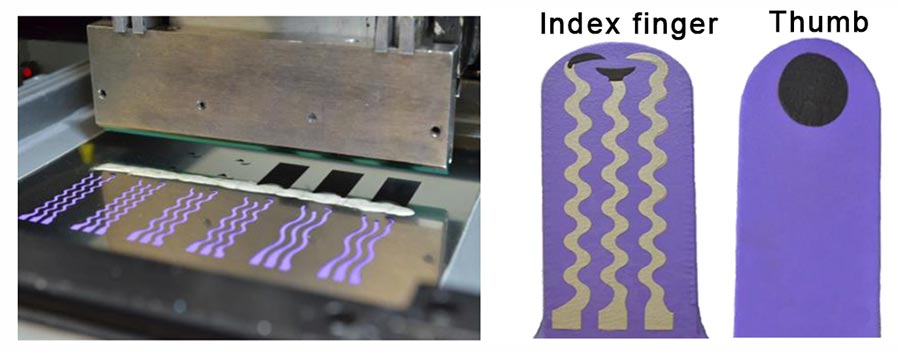‘Lab-on-a-glove’ Could Bring Nerve-agent Detection to a Wearer’s Fingertips
Published Date
By:
- Liezel Labios
Share This:
Article Content

"Lab-on-a-glove" rapidly detects organophosphate nerve agents. A user swipes the thumb on a surface, then touches the thumb and index fingers together, creating a signal that's sent via a reusable Bluetooth device on the back of the glove to a user's mobile device. Image courtesy of Laboratory for Nanobioelectronics and American Chemical Society
There's a reason why farmers wear protective gear when applying organophosphate pesticides. The substances are very effective at getting rid of unwanted bugs, but they can also make people sick. Related compounds — organophosphate nerve agents — can be used as deadly weapons. Now researchers have developed a wearable, flexible biosensor glove that can rapidly detect toxic nerve agents with the touch of a finger. The so-called "lab-on-a-glove" could help improve both defense and food security measures.
The researchers, led by nanoengineering professor Joseph Wang at the University of California San Diego, published their work this month in ACS Sensors. The biosensor glove is one of the latest technologies coming out of the UC San Diego Center for Wearable Sensors, which is directed by Wang.
Organophosphate nerve agents, including sarin and VX, are highly toxic and can prevent the nervous system from working properly. Organophosphate pesticides are far less potent but work in a similar way and can cause illness in people who are exposed to them, according to the U.S. Centers for Disease Control and Prevention. Detecting either type of these sets of compounds accurately and quickly could help improve both defense and food security measures. So, Wang and colleagues set out to develop a wearable sensor that could meet the requirements of field detection.

Biosensor glove printed with stretchable, functional inks. Image courtesy of Laboratory for Nanobioelectronics and American Chemical Society
The new wearable, flexible glove biosensor carries out the sampling and electrochemical biosensing steps on different fingers, with the thumb finger used for collecting the nerve-agent residues and the index finger containing an enzyme that reacts with organophosphate compounds. A user would swipe the thumb of the glove on a surface for testing, then touch the thumb and index fingers together, creating an electrochemical signal that's detected by the glove's electronics. The researchers created stretchable, functional inks to print the collection and sensing elements on these fingers.
For real-time results, the data are sent via a reusable Bluetooth device on the back of the glove to a user's mobile device. Testing showed that the glove could detect the organophosphate pesticides methyl parathion and methyl paraoxon on various surfaces — including glass, wood and plastic — and on produce. The researchers say the sensor could be used in both security and food safety settings.
This work was supported by the Defense Threat Reduction Agency Joint Science and Technology Office for Chemical and Biological Defense.
Share This:
You May Also Like
Stay in the Know
Keep up with all the latest from UC San Diego. Subscribe to the newsletter today.



